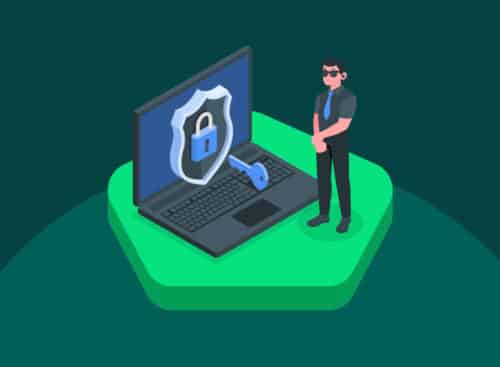
The Evolution of Cyber Threats: Things dragged into the sector of digital security.
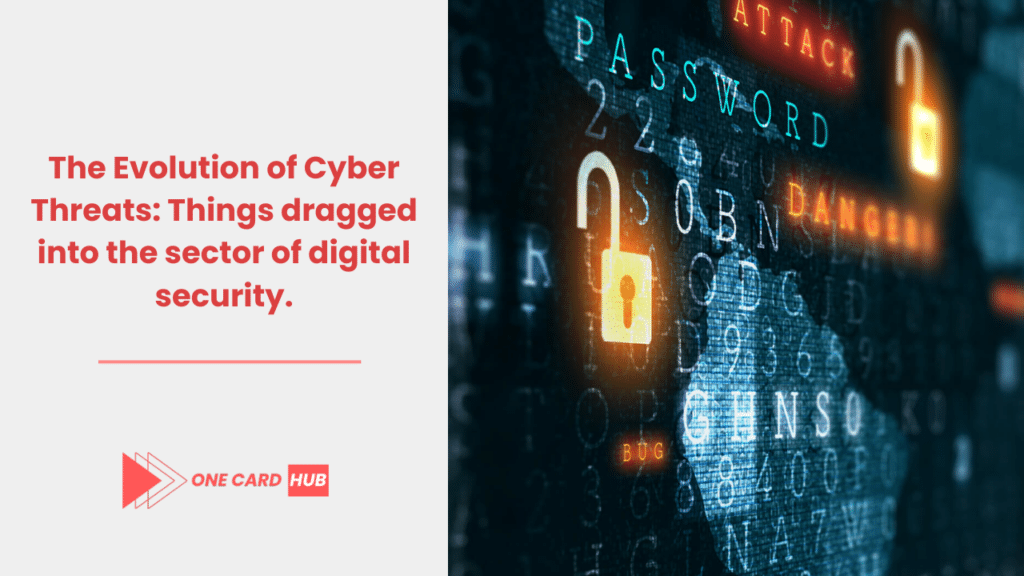
With the rapid development of the digital world, the pace and competence of cyberdisasters worsens. Cyber threats progressed their evolution from the times of simple viruses to modern and complicated cyber spying facilities, thus continuously illustrating the fight between cybercriminals and experts in cybersecurity. This post more specifically discusses digital security trends, emphasizing advanced cyber threats and the possible threats of a connected universe on the future of our world.
The Early Days: The Virus and worms.
The early heavyweight types of attacks on the web had a viral spirit in them - viruses and worms were dominant in those days. This was ten year span during which those were produced, created from ground of malicious software and were replicating and sparing the bandwidth and corrupting the files. In the past, the objectives of these attackers can be categorized to fame, rather than
money gains, which could be the unique case that we can compare to current cybercriminals.
Cybercrimes have risen, but not in all countries equally. Poor countries remain more vulnerable than wealthy countries in terms of incidence of cybercrime and severity of financial impacts. The cybercrime landscape has therefore exhibited rich-poor divides and a deepening of inequality.
With cybercrime and online fraud simultaneously increasing, cybercriminals, in turn, turned to such actions as hacking financial networks to make easy, illegitimate income. This time takes up the trojans, spywares, and ransomwares, that targets at individuals and as well as for businesses by stealing confidential financial and guarded data and information. In multi-phishing scams, usernames and passwords were stolen, horrifying personal info.
With cybercrime and online fraud simultaneously increasing, cybercriminals, in turn, turned to such actions as hacking financial networks to make easy, illegitimate income. This time takes up the trojans, spywares, and ransomwares, that targets at individuals and as well as for businesses by stealing confidential financial and guarded data and information. In multi-phishing scams, usernames and passwords were stolen, horrifying personal info.
The Attack of State Sponsors: A Postmodern Take on Cyber Warfare
This year, instances of state cyberspying activities have increased and become the notable element of the digital security scene. Such threats feature the highest level of technological advancements and are almost out-rightly aimed at spying, sabotaging or changing geopolitical results. State-sponsored hackers breach critical infrastructure, national security and strategic industries by applying advanced techniques that allow them to be undetected, and do what is needed to be done.
The Digitalization, Loss of Confidentiality, and Related Privacy Problems.
The emergence of the Internet of Things (IoT) and Smart Devices have since given room for a more complex cyber threat environment. Good examples of the devices of this sort is that they do not exhibit strong protection features and therefore act as soft targets which are subject to being compromised and used as a part of big botnets through which DDoS attacks or malware can be spread.
Ransomware: From being A Troublesome to a Security Risk to the Nation
Ransomware attacks originally started to intimidate only ordinary people, and it is now the matter of question if it is a threat only to national security. Critical infrastructures, hospitals and local governments can be the victims of these cyberattacks. The negative impact of this can be appalling, to say the least; they come with heavy financial consequences and as calculated as it is, these attacks can totally shut down essential services and have to be paid off with quite a heavy ransom before the data can be restored normally.
The Increasingly Ways Digital Threats Penetrate into the Vulnerable Points of a Supply Chain.
Supply chain attacks has recently emerged as a dreadful trend, criminals exploiting less secured interlinking elements across the chain to reach the main target. Via the exploitation of weaknesses in the across the boards services and software, the hackers can reach multiple victims, thus pointing out all the international supply chains connectedness and weaknesses itself that can arise from the beginning to the end of this supply chain.
The Future: Artificially intelligence (AI) and Machine Learning (ML) are employed in cybersecurity.
AI and ML have started playing a significant role both in cybersecurity as well as cybercrime, and it would be logical to expect this role to grow. AI and ML can largely increase saying threat detection and response that defenders have now. On the other hand, the same technology provides transactional security for big organizations against such malicious attackers who develop the malware for the processes such as automation of attacks and plotting of vulnerabilities.
Incorporated with the dynamic cyber threat situation, adapting to the change is a must.
The never ending development of cyber threats brings on the ground of persistent alertness; fast adaptation and cooperation in the cyber security initiatives. Indeed, any criminals devising a new mode of attack, shall face a counter-measure that will be carefully developed as well. As cyber spaces get more risky, learning about the newest developments, encouraging cybersecurity education, and tightening security through high-tech applications such as automation, machine learning among others will complement to the struggle against cybercrime attrition. Cybersecurity in the future of digital will without doubt require a heroic effort as the cyber threats evolve; but through proactive effort and setting a pace for resilience, we can survive the threatening tides.
Apart from deepfakes, social engineering of different types is also being developed as an innovative way of impacting the warriors' mental health.
In the course of time, the sphere of social engineering attacks is growing to be more and more complicated due to the rapid development and evolution of technology. My concern about the deepfakes which present the most serious and challenging dilemma to us is the highly realistic videos or audio recordings, falsified deliberately for other reasons. These can be established to establish convincing phishing scams that will spread false information or act on behalf of public officials for bad intentions. The distinction between what is real and what is fake can become progressively difficult, so that s educating and enlightenment would become even more important.
Quantum Computing: On One Hand – a Double-Edged Sword Though
The introduction of quantum computers to the digital realm comes with a versatile effect on the security arena. On one side it gives an opportunity for faster processing which cryptology and cybersecurity would benefit a lot and on the other hand it, it is a security threat to our recent breakthroughs. At one hand, it is a breakthrough for the contemporary encryption modes, paving their way to elimination. On the other hand, it is posing a challenge to the current encryption standards, possibly resulting in the discontinuation of current cryptographic methods. Planning a post-
quantum cybersecurity setting provides Space for quantum-proof encryption techniques the researchers and developers to test in order to find out possible ways they would work.
In this context, the cybersecurity skills gap is growing bigger and bigger.
As cyber threats are mounting the impendency of cybersecurity professionals with a resultant shortage of skilled staff keeps on increasing which has left to a considerable skills gap. Such directional cyber security gap weakens organizations' defense against the proficient attacks sharply. As of this moment, it is a must to overcome this gap, which can be done by investing in education, training programs, and introducing an approach to talent retention in the cybersecurity field.
The Growing Importance of Cybersecurity as a Boardroom Agenda
With the mounting number of cyber attacks appearing these days, adding weight and intensification, cybersecurity is no longer an IT affair; cybersecurity has now advanced to become a strategic business concern. Companies started to see the need to merge the cybersecurity component into their overall approach the business, with the board responsible for the oversight of all this. The transformation from tactical approach to strategic cybersecurity governance, not only implies that top management takecybersecurity into account in their decision-making, but also that it becomes an interconnecting factor in these decisions as well.
Legislation and regulation are vital components of sustainable development policies.
With the ceaseless development of digital threat landscape, come the legal and regulatory standards, which exist around the cybersecurity. Governments at all levels are passing laws and regulatory measures intended for the use - and collection - of personal data restrictions, for the security of the critical infrastructure and the crime fight on the cyber space sphere. Organization should keep its diligence by staying informed and knowing about different rules and regulations for the security of their data, adding to the cybersecurity challenge.
Collaboration and Information Sharing
In the battle of cyber threats, the partnership and the information exchange across organizations, governments, and other international bodies are essential. Disseminating threat knowledge, recommended methods, and security tools can lead to building a societal protection, in which assured are the attackers' achievement. In fact, initiatives such as the building of Information Sharing and Analysis Centers (ISACs) and public-private alliances are reflective instances of the effectiveness that collaborative approaches can yield in boosting cybersecurity resilience.
Walking in the Light of Resilience and Flexibility : Adoption and Implementation.
The perpetual evolution of cyber threats explains the need for a distinctive and changing direction to digital security. Lastly, if we think about the future, being ready, and dealing with the consequences of a cyber-attacks should be amongst the key main principles. We will accomplish to build a safe digital world only if we are ready to create the culture of security awareness, to find out future proof technological solutions, and to collaborate with each other. The ahead path diverges, but with perseverance and innovation, as which tools we can face the developing cyber threat landscape in an assured manner.
Cyber Insurance: More and more now needed
With cyber dangers growing and potentially creating serious harm, cyber insurance is now the increasingly important cyber security tool in the processing of risk management. It creates a buffer for businesses catapulted into the turmoil caused by cyber-attacks, with such costs as assistance with data breaches, system recoveries, defence and more. Nonetheless, with the escalation of cyber-insurance demand, this analysis will progress too and the cybersecurity measures of insured parties will become the matter of scrutiny. There is a need for a business to ensure that it has strong security measures on its disposal which is a requirement for underwriters to provide the cover hence, even good cyber hygiene practices have to be prioritized.
The Demanding Situation of Taking Good Care of Security in Mobile and Remote Work
With the rise of remote work and the extensive use of mobile devices, cyber threats have been given greater susceptibility newly developed surfaces. Organizations must follow suit, and they have to ensure that their security measures that are aimed to facilitate a decentralized workforce, including secure VPNs, endpoint security, and cloud based security solutions. In addition teaching employees the necessity of a safe home network and the danger of public Wi-Fi usage is one of the keys to mention for an organization’s security in the environment of remote employment.
A Word on the Security it Brought by 5G Technology
The deployment of the fifth-generation (5G) network aspires to offer internet connections speeds which are much faster and stable while at the same time, this introduces new cybersecurity challenges. The enhanced bitrates and response time also are likely to spur the scale and success of cyber-attacks, while the emerging 5G-based IoT devices prone to hacking will further complicate the safeguarding of the networks. The solution to overcoming this type of problems should be through innovative security approaches that can meet the demands of the 5G networks which involve high speed technology and large scale.
Artificial Intelligence: Protecting the Homeland and Onslaught also.
AI and ML algorithms are proliferating the cybersecurity industry as they are used to identify anomalies, forecast threats, and take automatic corrections. On the other hand, the cybercriminals are also using the AI to improve the characteristic of the malware by generating more complex attack methods, such as polymorphic malware that use the changing code to evade detection. The cybersecurity community also should be updated by developing AI based security solutions for a long term and form some ethical guidelines for AI usage in cybersecurity in short term.
Governing the global cyber-space appears to be the utmost necessity, and this is only possible if a common cyber-security framework is put in place.
Cyber threats on the internet are supported by borderless level, therefore the cybersecurity extensively require international cooperation to gain effective control over threats. There is an increasing loud clamour for the conception and formulation of a universal cybersecurity framework which would create an international norm, improve information-sharing, and enable a stronger coordination of the response to cyber incidents. Creating a cybersecurity framework for the digital world is not an easy task in which different geopolitical issues take part, but it requirements for the highly globalized nature of cybersecurity.
Governing the global cyber-space appears to be the utmost necessity, and this is only possible if a common cyber-security framework is put in place.
Cyber threats on the internet are supported by borderless level, therefore the cybersecurity extensively require international cooperation to gain effective control over threats. There is an increasing loud clamour for the conception and formulation of a universal cybersecurity framework which would create an international norm, improve information-sharing, and enable a stronger coordination of the response to cyber incidents. Creating a cybersecurity framework for the digital world is not an easy task in which different geopolitical issues take part, but it requirements for the highly globalized nature of cybersecurity.
The spotlighting of Personal Responsibility in Cybersecurity is one of the most important components of achieving a coordinated and effective approach to preventing cyberattacks.
Both the organizations and the ones in power have the ability to impact cybersecurity but not the sole holders of this status. By following good cyber hygiene guidelines, like creating strong passwords, updating applications, and being alert about phishing, the threat of cyberattacks may be greatly limited. Educational and awareness initiatives are critical in exhorting the individual take up the digital safety demand.
Cyber Security Challenges and the Role of Public Policy: Proactive and Sustainable Approaches of a Cooperative Effort
The permutation of cyber threats calls for a pre-emptive approach, an adaptive response, and a collaborative posture in cybersecurity. Through use of cutting-edge technologies, development of global partnerships and giving cybersecurity due attention as a governance issue, we form a strategy to meet those emerging threats arising from the digital realm. But the future of cybersecurity is going to be determined by the commitment and attention of all those implicated by the digital media, not only by the specialist and the official who have the task of carrying on with this process. Moving forward, with all our effort aligned, we can successfully construct a safer, stronger, and more trustmaking digital world.
FAQ: The digital security issues and cyber threats are moving towards patterns and change.
1. What kind of cyber threats do they present to current and future society?
Apparently, cyber threats have gone through successive stages since their appearance on the scene as harmless viruses and worms seeking fame; most of today’s activities are from cyber-criminals with a motive of money or state-dictated espionage involving attack on computerized things and critical infrastructures.
2. At the heart of the dilemma is the question of the specific features of the state-run hacking that differentiate it from other kinds of cyber attacks.
Nation-states’ attacks made with the money of the government, usually for espionage, sabotage of critical infrastructure, or capable of shaping political affairs have been proved through voluminous examples of cyber warfare.
3. What are the cyber security-related issues IoT devices might be vulnerable to?
The majority of IoT devices are vulnerable to hacker attack because they have weak security protocols. Criminals can abuse this to take information, create botnets, or attack organization by DDoS.
4. How do ransomware stayed among the top risks?
Nowadays it is not rare that ransomware affects not only individuals, but also unite our hospital and public services under the same attack demanding high ransoms that withholds important service delivery.
5. What are the supply chain hacking and what makes them major risk to the industry?
Supply chain attacks use the supply chain’s vulnerabilities of the target’s to gain access to the main target or a wide range of victims, thus displaying the whole evil plot and vulnerabilities of the global networks of the same.
6. Can anything be done as quantum computing is approaching and so, in what ways can it influence cybersecurity?
Quantum computing puts classical encryption techniques at great risk, thus maybe by monitoring new security systems quantum hackers could be given a bad time, but on the other hand, this can provide novel approaches for cyber resilience.
7. What is that of cyber security skill gap and in what way is it a problem.
The cybersecurity skills gap describes a situation where there are insufficient skilled professionals in the field, hence, making it difficult for organizations to guard against the more advanced cyber attacks as the exponential improvement in the cyber world is taking place by the minute.
8. What brought so much concern to the cybersecurity world so that it is now on the top priority for corporations?
Cyberattacks have become more frequent and intensive in scale and have pushed cybersecurity up from being an IT responsibility to becoming a business issue to the board of directors that should be integrated to the overall business strategy to take care of it.
9. What can citizens do to secure cyberspace against cybercrime?
People may choose to be cyber hygiene, keep up to date with the latest threats, use strong password, enable MFA and be on guard for phishing mails, which is conducive to more secure online environment.
Apparently, cyber threats have gone through successive stages since their appearance on the scene as harmless viruses and worms seeking fame; most of today’s activities are from cyber-criminals with a motive of money or state-dictated espionage involving attack on computerized things and critical infrastructures.
2. At the heart of the dilemma is the question of the specific features of the state-run hacking that differentiate it from other kinds of cyber attacks.
Nation-states’ attacks made with the money of the government, usually for espionage, sabotage of critical infrastructure, or capable of shaping political affairs have been proved through voluminous examples of cyber warfare.
3. What are the cyber security-related issues IoT devices might be vulnerable to?
The majority of IoT devices are vulnerable to hacker attack because they have weak security protocols. Criminals can abuse this to take information, create botnets, or attack organization by DDoS.
4. How do ransomware stayed among the top risks?
Nowadays it is not rare that ransomware affects not only individuals, but also unite our hospital and public services under the same attack demanding high ransoms that withholds important service delivery.
5. What are the supply chain hacking and what makes them major risk to the industry?
Supply chain attacks use the supply chain’s vulnerabilities of the target’s to gain access to the main target or a wide range of victims, thus displaying the whole evil plot and vulnerabilities of the global networks of the same.
6. Can anything be done as quantum computing is approaching and so, in what ways can it influence cybersecurity?
Quantum computing puts classical encryption techniques at great risk, thus maybe by monitoring new security systems quantum hackers could be given a bad time, but on the other hand, this can provide novel approaches for cyber resilience.
7. What is that of cyber security skill gap and in what way is it a problem.
The cybersecurity skills gap describes a situation where there are insufficient skilled professionals in the field, hence, making it difficult for organizations to guard against the more advanced cyber attacks as the exponential improvement in the cyber world is taking place by the minute.
8. What brought so much concern to the cybersecurity world so that it is now on the top priority for corporations?
Cyberattacks have become more frequent and intensive in scale and have pushed cybersecurity up from being an IT responsibility to becoming a business issue to the board of directors that should be integrated to the overall business strategy to take care of it.
9. What can citizens do to secure cyberspace against cybercrime?
People may choose to be cyber hygiene, keep up to date with the latest threats, use strong password, enable MFA and be on guard for phishing mails, which is conducive to more secure online environment.

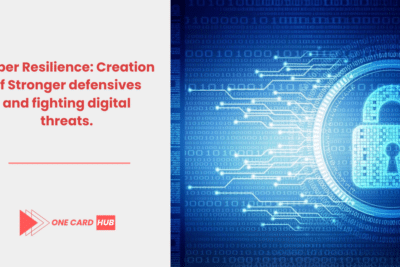


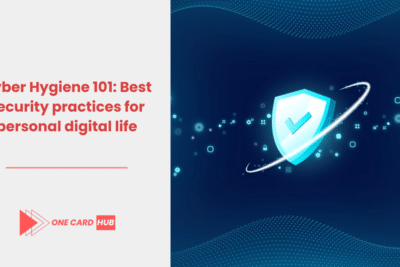
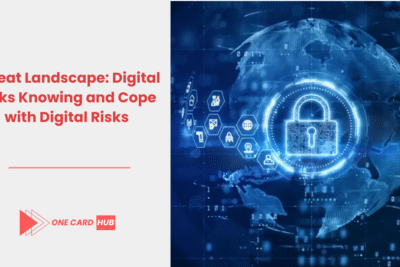
Related posts